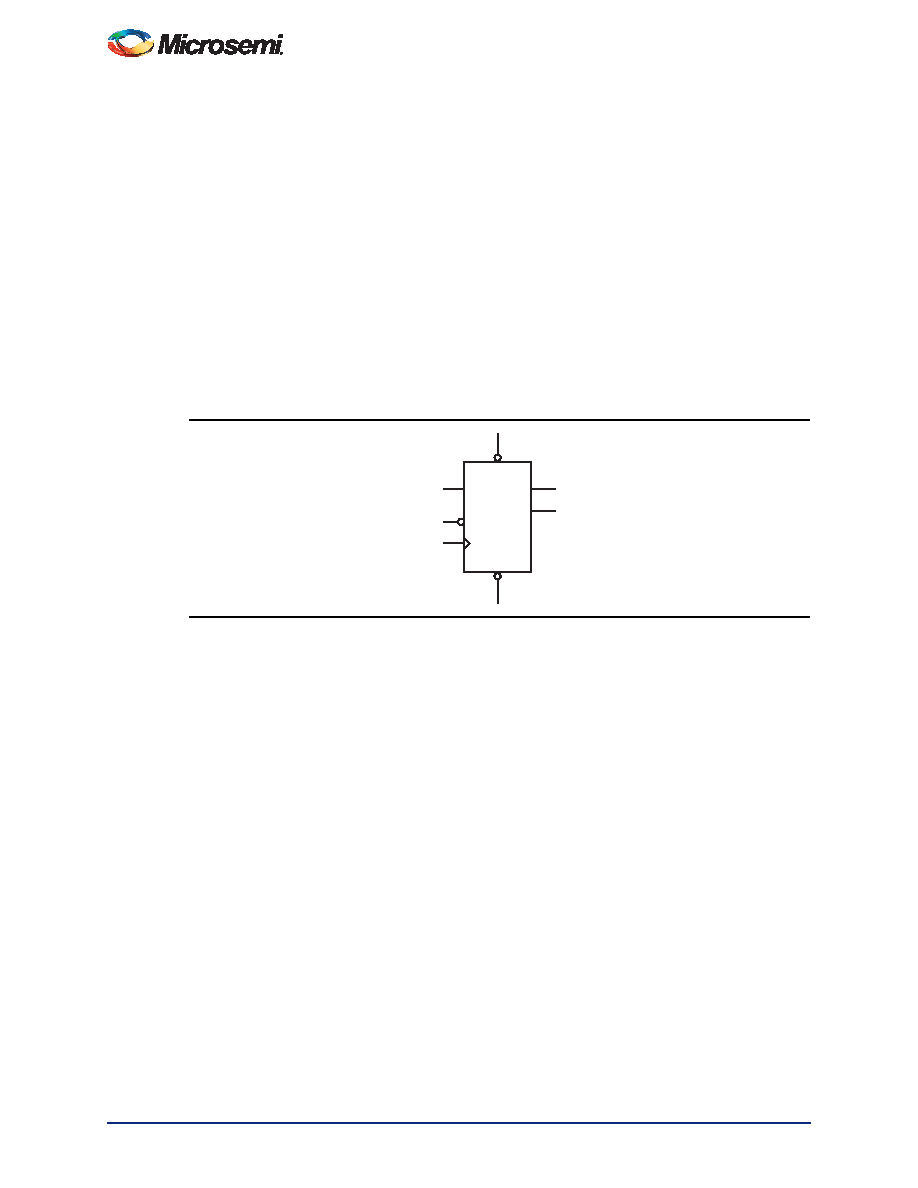- 您現(xiàn)在的位置:買賣IC網(wǎng) > PDF目錄4449 > AX125-FGG324I (Microsemi SoC)IC FPGA AXCELERATOR 125K 324FBGA PDF資料下載
參數(shù)資料
| 型號: | AX125-FGG324I |
| 廠商: | Microsemi SoC |
| 文件頁數(shù): | 189/262頁 |
| 文件大小: | 0K |
| 描述: | IC FPGA AXCELERATOR 125K 324FBGA |
| 標(biāo)準(zhǔn)包裝: | 84 |
| 系列: | Axcelerator |
| 邏輯元件/單元數(shù): | 1344 |
| RAM 位總計: | 18432 |
| 輸入/輸出數(shù): | 168 |
| 門數(shù): | 125000 |
| 電源電壓: | 1.425 V ~ 1.575 V |
| 安裝類型: | 表面貼裝 |
| 工作溫度: | -40°C ~ 85°C |
| 封裝/外殼: | 324-BGA |
| 供應(yīng)商設(shè)備封裝: | 324-FBGA(19x19) |
第1頁第2頁第3頁第4頁第5頁第6頁第7頁第8頁第9頁第10頁第11頁第12頁第13頁第14頁第15頁第16頁第17頁第18頁第19頁第20頁第21頁第22頁第23頁第24頁第25頁第26頁第27頁第28頁第29頁第30頁第31頁第32頁第33頁第34頁第35頁第36頁第37頁第38頁第39頁第40頁第41頁第42頁第43頁第44頁第45頁第46頁第47頁第48頁第49頁第50頁第51頁第52頁第53頁第54頁第55頁第56頁第57頁第58頁第59頁第60頁第61頁第62頁第63頁第64頁第65頁第66頁第67頁第68頁第69頁第70頁第71頁第72頁第73頁第74頁第75頁第76頁第77頁第78頁第79頁第80頁第81頁第82頁第83頁第84頁第85頁第86頁第87頁第88頁第89頁第90頁第91頁第92頁第93頁第94頁第95頁第96頁第97頁第98頁第99頁第100頁第101頁第102頁第103頁第104頁第105頁第106頁第107頁第108頁第109頁第110頁第111頁第112頁第113頁第114頁第115頁第116頁第117頁第118頁第119頁第120頁第121頁第122頁第123頁第124頁第125頁第126頁第127頁第128頁第129頁第130頁第131頁第132頁第133頁第134頁第135頁第136頁第137頁第138頁第139頁第140頁第141頁第142頁第143頁第144頁第145頁第146頁第147頁第148頁第149頁第150頁第151頁第152頁第153頁第154頁第155頁第156頁第157頁第158頁第159頁第160頁第161頁第162頁第163頁第164頁第165頁第166頁第167頁第168頁第169頁第170頁第171頁第172頁第173頁第174頁第175頁第176頁第177頁第178頁第179頁第180頁第181頁第182頁第183頁第184頁第185頁第186頁第187頁第188頁當(dāng)前第189頁第190頁第191頁第192頁第193頁第194頁第195頁第196頁第197頁第198頁第199頁第200頁第201頁第202頁第203頁第204頁第205頁第206頁第207頁第208頁第209頁第210頁第211頁第212頁第213頁第214頁第215頁第216頁第217頁第218頁第219頁第220頁第221頁第222頁第223頁第224頁第225頁第226頁第227頁第228頁第229頁第230頁第231頁第232頁第233頁第234頁第235頁第236頁第237頁第238頁第239頁第240頁第241頁第242頁第243頁第244頁第245頁第246頁第247頁第248頁第249頁第250頁第251頁第252頁第253頁第254頁第255頁第256頁第257頁第258頁第259頁第260頁第261頁第262頁

Detailed Specifications
2- 18
R e v i sio n 1 8
Using the Differential I/O Standards
Differential I/O macros should be instantiated in the netlist. The settings for these I/O standards cannot
be changed inside Designer. Note that there are no tristated or bidirectional I/O buffers for differential
standards.
Using the Voltage-Referenced I/O Standards
Using these I/O standards is similar to that of single-ended I/O standards. Their settings can be changed
in Designer.
Using DDR (Double Data Rate)
In Double Data Rate mode, new data is present on every transition of the clock signal. Clock and data
lines have identical bandwidth and signal integrity requirements, making it very efficient for implementing
very high-speed systems.
To implement a DDR, users need to:
1. Instantiate an input buffer (with the required I/O standard)
2. Instantiate the DDR_REG macro (Figure 2-6)
3. Connect the output from the Input buffer to the input of the DDR macro
Macros for Specific I/O Standards
There are different macro types for any I/O standard or feature that determine the required VCCI and
VREF voltages for an I/O. The generic buffer macros require the LVTTL standard with slow slew rate and
24 mA-drive strength. LVTTL can support high slew rate but this should only be used for critical signals.
Most of the macro symbols represent variations of the six generic symbol types:
CLKBUF: Clock Buffer
HCLKBUF: Hardwired Clock Buffer
INBUF: Input Buffer
OUTBUF: Output Buffer
TRIBUF: Tristate Buffer
BIBUF: Bidirectional Buffer
Other macros include the following:
Differential I/O standard macros: The LVDS and LVPECL macros either have a pair of differential
inputs (e.g. INBUF_LVDS) or a pair of differential outputs (e.g. OUTBUF_LVPECL).
Pull-up and pull-down variations of the INBUF, BIBUF, and TRIBUF macros. These are available
only with TTL and LVCMOS thresholds. They can be used to model the behavior of the pull-up
and pull-down resistors available in the architecture. Whenever an input pin is left unconnected,
the output pin will either go high or low rather than unknown. This allows users to leave inputs
unconnected without having the negative effect on simulation of propagating unknowns.
DDR_REG macro. It can be connected to any I/O standard input buffers (i.e. INBUF) to
implement a double data rate register. Designer software will map it to the I/O module in the same
way it maps the other registers to the I/O module.
Figure 2-6
DDR Register
DQR
QF
D
CLR
PSET
CLK
相關(guān)PDF資料 |
PDF描述 |
|---|---|
| AX125-FG324I | IC FPGA AXCELERATOR 125K 324FBGA |
| AX125-1FG324 | IC FPGA AXCELERATOR 125K 324FBGA |
| 10350-3210-000 | CONN JUNCTION SHELL 50POS STRGT |
| CAT93C56VI-GT3 | IC EEPROM 2KBIT 2MHZ 8SOIC |
| 3357-9225 | BACKSHELL 25 POS |
相關(guān)代理商/技術(shù)參數(shù) |
參數(shù)描述 |
|---|---|
| AX125-FGG896 | 制造商:ACTEL 制造商全稱:Actel Corporation 功能描述:Axcelerator Family FPGAs |
| AX125-FGG896B | 制造商:ACTEL 制造商全稱:Actel Corporation 功能描述:Axcelerator Family FPGAs |
| AX125-FGG896I | 制造商:ACTEL 制造商全稱:Actel Corporation 功能描述:Axcelerator Family FPGAs |
| AX125-FGG896M | 制造商:ACTEL 制造商全稱:Actel Corporation 功能描述:Axcelerator Family FPGAs |
| AX125-FGG896PP | 制造商:ACTEL 制造商全稱:Actel Corporation 功能描述:Axcelerator Family FPGAs |
發(fā)布緊急采購,3分鐘左右您將得到回復(fù)。